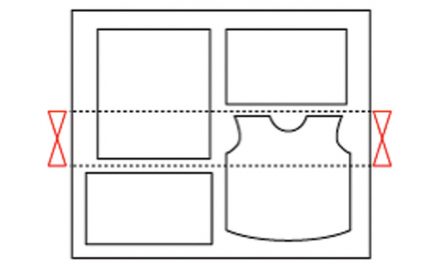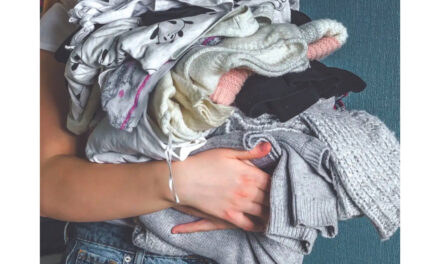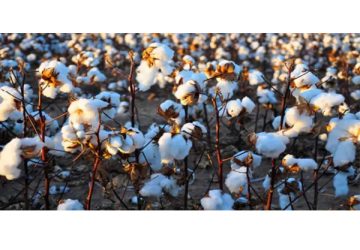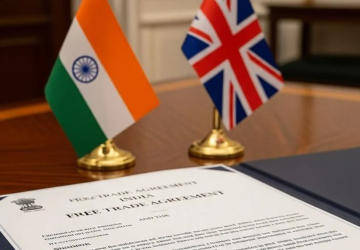
Ahead of the Modi-Trump meeting in Washington, New Delhi has signaled its intent to lower tariffs in a bid to avoid a showdown with the US administration. And the 2025-26 Union Budget has opened up the motorcycle segment of the auto industry by slashing customs duties. Particularly noteworthy is the duty reduction on the iconic American Motorcycle, Harley Davidson. Besides, the tariffs on large vehcles and vehicles to transport goods will also come down. With these measures, the government hopes to reduce the huge trade surplus with the US estimated at $ 21.2 bn in April – October 2024. The US had demanded a tariff cut on Harley Davidson bike a few years ago. Much will depend on the meeting scheduled for Feb 12 and 13.
Amidst this scenario, if one looks at the global textile and apparel trade, the year 2025 looks promising. The apparel consumption is set to touch the $ 2.6 trillion mark. This means a market addition of $ 900 billion, the bulk of which is expected to materialise in India and China.
According to a report prepared by Wazir Advisors, India’s apparel market size is set to increase to $ 180 bn in 2025 from $ 59 bn in 2015 – a decade ago – while that of China is expected to add more than 377 bn in this period.
In contrast, apparel consumption in US and Europe will increase at a much slower rate. The differentrial growth indicates that the domestic market of Chine and India will be a huge opportunity for investment and growth.
The report titled “ The Road to 2025” says China’s share in global apparel trade will decline from the current level in a shift of focus to value added sectors with the domestic market out pacing exports, due to rise in manufacturing costs.
Asian countries are expanding their global market share at the cost of high – cost nations like Italy, Spain, Mexico, Portugal etc. The potential of China and India as “Super Consumers” has been accepted as evident from the strategies of large international manufacturers’ brands and retailers to penetrate these countries.
China and India are the most populous countries and their growing economies have received most attention from international companies in recent times. China is at the forefront in attractive investment across the sectors. India is also catching up fast. India replaced China as the largest FDI recipient in 2015. The macro – economic projections over the next few years show continuation of high growth in both countries leading to doubting of GDP by 2025.
As in known and the report notes that cotton a natural fibre is not expected to grow in line with the global demand, creating supply-demand gap which will be filled mainly by polyester which already has a larger share than cotton. The inescapable conclusion is that man-made fibres (MMFs) will continue to gain market share.
Last but not the least preferential market access arrangements will drive up global trade and investment in the textile and apparel sector. It is to be noted that what the market demands, produce and supply goods at the high time. How best India is able to do this that is preferential market access arrangements will be the deciding factor. It may have to think in terms of cross border investments while the government has to focus on providing a “conducive environment and support infrastructure rather that an incentivizing approach”, the report advocates.
The Wazir Advisors report notes that the present global apparel market consumption estimated at $ 1.7 trillion represents about two percent of the world GDP of $73.5 trillion.
Now turn to “per capita expenditure on apparel” (PEAP), Wazir’s analysis reveals that the combined apparel consumption share of the US and EU is 40 percent while they are home to 11 percent of the world population, which is extremely high in these countries. There is also a clear demarcation between developed and developing economies in respect of PEAP. India has the lowest PEAP of $ 45, less than 5 percent of the highest $978 in the US. India’s PEAP is only a quarter of that of China.
There is a strong to relation between consumer spending on various categories and their economic structure with limited economic resources a consumer first priority is always to satisfy the basic needs clothing and housing and foods.
US are India’s second largest trading partner, after China. During the last fiscal i.e. 2023-24. India had a trade surplus of $ 35 bn on exports of $ 75 bn. However, the government maintaining that the trade numbers do not capture the services data.
Now compare China with India. Reports say India’s trade surplus is insignificant compared to China’s $ one trillion surplus last year as its exports virtually swamped the globe at the same time going “cautious” on its imports. China’s trade surplus, according to reports, far exceeded any in the world in the past century, even those export power houses like Germany, Japan or the US. Global manufacturing is dominated by Chinese factories on a scale not experienced by any country.
Both developed and developing countries have erected trade barrios to stem the tide, but China has retaliated in kind a situation closer to a trade war. China’s general administration of customs data show that the country exported $ 3.6 trillion worth of goods while importing $ 2.6 trillion, a trade surplus of $ 900 bn, breaking its previous record of $ 838 bn in 2022. Many importers find China a most competitive place to buy goods.
With increase in disposable income, the share of expenditure on basic categories decreases, whereas the share on new categories like entertainment, recreation, travel, consumer durables increases. However the expenditure on clothing, the report notes, does not go down in “absolute” terms both the increase is slower than the overall increase in expenditure.
All four BRIC nations appear among the top market having a cumulative share of about 23 percent, with china leading the pack while the rest all largest markets are developed countries. At a macro level, apparel consumption growth in emerging or developing market will be faster than the economic growth. It should be slower in developed economies. China will emerge as the single largest market registering double digit growth rate in PEAP as well. Still PEAP for developed countries will remain higher than the BRIC nations.


















